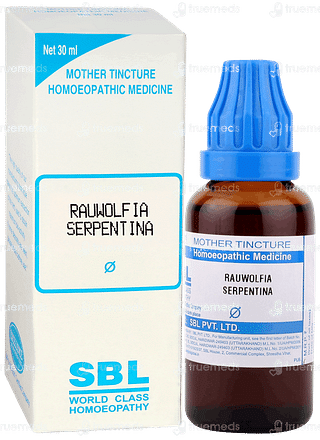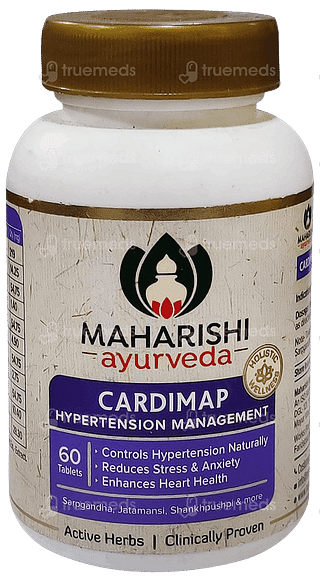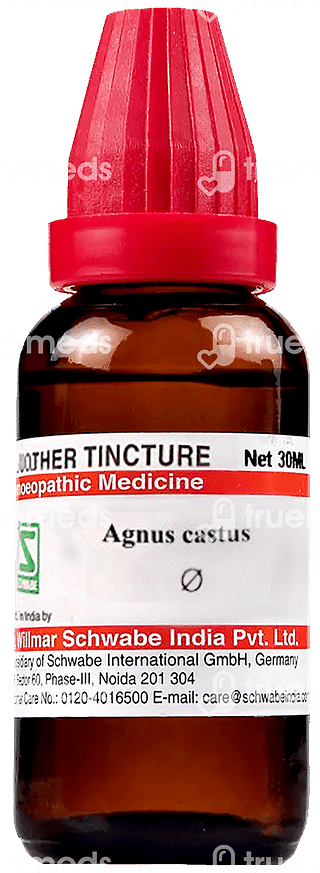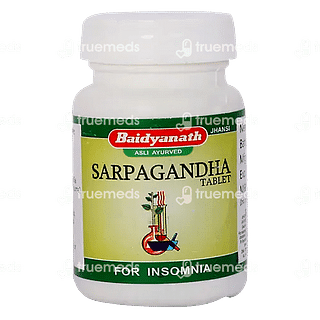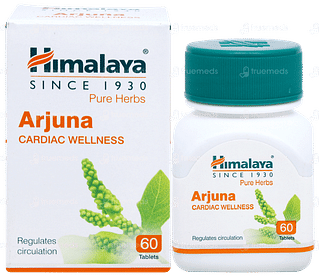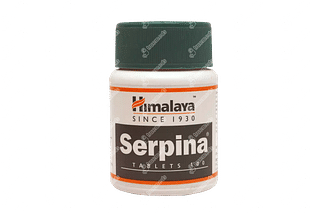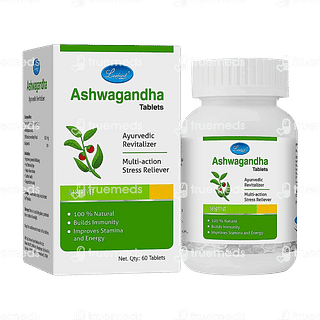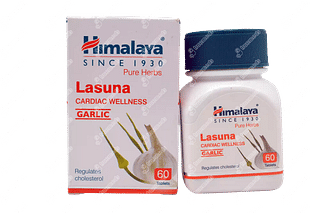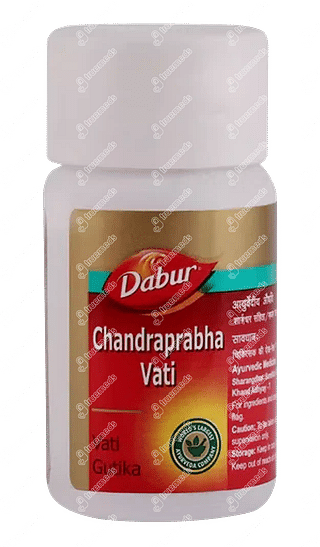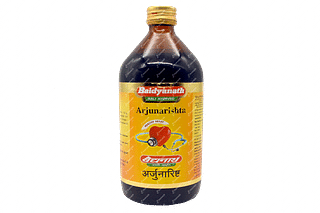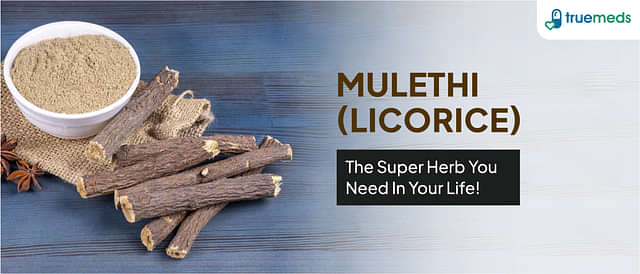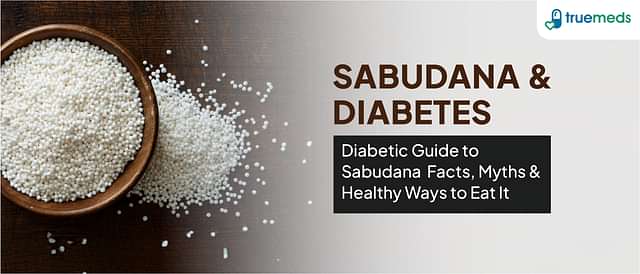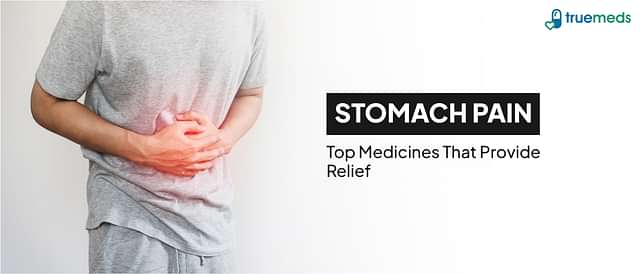15 Ayurvedic Remedies To Manage High Blood Pressure
Last updated on : 27 Mar, 2025
Read time : 39 min
Hypertension, characterized by persistently high blood pressure, is a leading cause of cardiovascular diseases globally. The World Health Organization (WHO) defines hypertension as having a systolic blood pressure of 140 mmHg or higher, or a diastolic blood pressure of 90 mmHg or higher, among individuals aged 30-79. This means that approximately 1.13 billion people all over the world are suffering from this disease, and the data shows that in 2015 one in four men and one in five women are at risk.
Hypertension itself is one of the major risks for developing heart, brain, and kidney diseases, and other diseases generally, leading to high rates of mortality among patients. Given the increasing number of patients suffering from hypertension, a growing interest in alternative medicine, like ayurvedic treatment, has been developed for managing this particular disease.
There are a variety of hypertension types: primary or essential ones, meaning that the origin is unknown; secondary hypertension, related to some other disease; isolated systolic hypertension, connected with aging and cardiovascular function; neurogenic hypertension—caused by a strong stimulation of the sympathetic nervous system, often brought about by excitement or anxiety.
Classification of Blood Pressure
| Sr. No. | Type | Systolic B.P. | Diastolic B.P. |
| 1 | Optimal B.P | <120 | <80 |
| 2 | Normal B.P. | <130 | <85 |
| 3 | High Normal B.P. | 130-139 | 85-89 |
A major intervention to prevent one from developing high blood pressure (hypertension) is making the necessary dietary modification. Ayurvedic home remedies have been instrumental in the management of high blood pressure and many lifestyle diseases.
According to a book by Dr . Vasant Lad, The complete book of Ayurvedic home remedies one can try home remedies under the supervision of doctors along with ongoing medical care. Simultaneously you should ask your doctor to monitor the progress.
Understanding Hypertension in Ayurveda
1) Concept of blood pressure according to Ayurveda
Blood pressure is the force of blood pushing against the walls of the arteries as it flows through them. There are two parts to blood pressure: systolic and diastolic. Systolic pressure happens when the heart contracts and pumps blood out, while diastolic pressure is when the heart relaxes and fills with blood again. The heart’s own electrical system, called the SA node, helps it beat regularly. This is controlled by the autonomic nervous system.
In Ayurveda, blood pressure is seen as a result of imbalances in the body’s doshas, or energies. When the doshas, particularly Vata and Pitta, become imbalanced, they can affect the flow of blood through the body’s channels, or srotas. This disruption in the flow of energy can lead to an increase in blood pressure.
2) Doshas involved in hypertension (Vata, Pitta, Kapha)
In Ayurveda, Vata, Pitta, Kapha doshas are involved in hypertension. It typically involves an imbalance in the Vata and Pitta doshas. These doshas control different functions in the body, and when they become imbalanced, they can disrupt the flow of energy and fluids, leading to high blood pressure. Kapha dosha may also play a role in some cases, particularly if you have obesity or fluid retention. However, Vata and Pitta are often the primary doshas involved in hypertension.
3) Factors contributing to hypertension in Ayurveda
Several factors contribute to hypertension in Ayurveda. These include:
- Imbalanced Doshas: The primary cause of hypertension in Ayurveda is an imbalance in the doshas, particularly Vata and Pitta. When these doshas become imbalanced, they can disrupt the flow of energy and fluids in the body, leading to high blood pressure.
- Sedentary Lifestyle: Lack of physical activity and exercise can lead to poor circulation, weight gain, and imbalances in the doshas, all of which can contribute to hypertension.
- Poor Diet: Consuming a diet that is high in salty, spicy, and fatty foods, as well as processed foods and excessive caffeine, can contribute to hypertension by aggravating Pitta dosha and causing imbalances in the body.
- Stress: Chronic stress and emotional factors can play a significant role in hypertension by increasing cortisol levels, stimulating the sympathetic nervous system, and causing imbalances in the doshas.
- Obesity: Excess body weight, particularly around the abdomen, can increase the risk of hypertension by putting extra strain on the heart and blood vessels and disrupting the balance of the doshas.
- Toxic Buildup: Accumulation of toxins (ama) in the body due to poor digestion, metabolism, and elimination can contribute to imbalances in the doshas and lead to hypertension.
- Genetics: A family history of hypertension can increase the risk of developing the condition, as there may be a genetic predisposition to certain imbalances in the doshas.
Some Natural Ayurvedic Home Remedies for High Blood Pressure
- Consume plenty of fruits and vegetables such as apples, bananas, blackberries, broccoli, cabbage, carrots, garlic, grapefruit, green leafy vegetables, onions, peas, tomatoes etc.
- Consume preferably vegetarian, low-fat, low-calorie diet rich in whole grain, high fibre and nuts
- Eat garlic and onion on a regular diet
- Practise physical exercises such as brisk walking daily for 30 – 45 minutes
- Weight reduction (in obese)
- Limit the use of salt (<5 gm/ day), fats and sweet
- Incorporate yoga and meditation: Regular yoga practice, including the Lotus Position (Padmasana), aids in managing stress and blood pressure. Explore more about Padmasana and its benefits in our detailed guide.Incorporate yoga and meditation: Regular yoga practice, including the Lotus Position (Padmasana), aids in managing stress and blood pressure. Explore more about benefits of Padmasana in our detailed guide.
Also Read : Home Remedies for High Blood Pressure
Ayurvedic Medicinal Herbs for Hypertension/High BP
Ayurvedic herbs like ashwagandha, Sarpagandha, Arjuna, Brahmi, Triphala and garlic are believed to help lower high blood pressure (BP) due to their natural properties, such as reducing stress, promoting relaxation, and improving blood circulation. Incorporating these herbs can effectively help lower high BP. Here is the list of ayurvedic medicinal herbs for hypertension/high bp.
1) Sarpagandha
Sarpagandha is a powerful ayurvedic medicine that contains phytonutrients, specific alkaloids with antihypertensive and sedative qualities. Furthermore, herbal medicines prepared from the roots of this plant are utilised to treat high blood pressure, which relaxes tight blood vessels to regulate forceful blood flow to the heart.
2) Garlic/ Rasona – Allium sativum
Research shows that consuming a raw clove of garlic each morning can help reduce cholesterol levels in the blood. Garlic is packed with beneficial compounds that also support healthy blood pressure levels.
One key component, the sulfur compound allicin, plays a vital role in improving blood flow and relaxing blood vessels. These effects can contribute to lower blood pressure. In fact, a review of multiple studies on high blood pressure found that regular garlic consumption reduced systolic pressure by an average of 8.3 mm Hg and diastolic pressure by 5.5 mm Hg—comparable to the impact of some hypertension medications.
This makes garlic a simple yet powerful addition to your daily routine for heart health.
Read more – Health benefits of Garlic
3) Arjuna
A number of symptoms of cardiovascular disease can be eased off by using the powder or decoction of the bark extracts of arjuna. This herb works wonders as it is packed with amazing anti-hypertensive compounds. It effectively dilates and relaxes the stiff blood vessels, to normalise blood pressure and relieves discomforting symptoms of hypertension. According to a study it was observed that Arjuna had a cardioprotective effect on angina patients.
4) Ashwagandha
Stress is one of the main factors that cause high BP. Ashwagandha also known as the Indian Ginseng or Winter Cherry is a potent ayurvedic herb that improves immunity. Ashwagandha, rich in adaptogens, helps the body cope with stress and anxiety. Add two tablespoons of Ashwagandha powder to a glass of water and drink it on an empty stomach every morning. Those suffering from high blood pressure can control it significantly by consuming it.
5) Amalaki – Emblica Officinalis
Amalaki or Amla or the Indian gooseberry is a great natural ayurvedic home remedy for hypertension. Amla has antioxidant and anti-inflammatory properties that remove toxins from the blood and releases pressure on the tubular structure leading to the heart. Several studies have demonstrated that regular intake of amla lowers blood pressure and also reduces the risks of cardiovascular diseases. The Indian gooseberry has abundant stores of antioxidants, vitamins and minerals like potassium. Potassium is a micronutrient that is extremely effective in relaxing the blood vessels which in turn drops the blood pressure resulting in controlled symptoms of hypertension. Consuming amla juice mixed with one tablespoon of honey regularly helps control both systolic and diastolic blood pressure.
6) Brahmi
Brahmi found in the wetlands of India, is also known as the herb that is believed to sharpen memory and enhance learning ability. Brahmi, considered a medicinal herb, is used to treat various ailments, including anxiety, helps fight and high blood pressure. In animal studies, Brahmi is safe and effective in lowering both systolic and diastolic blood pressure levels.
7) Jatamansi
Jatamanasi herb is abundant with antioxidants that save the arteries from damage due to free radicals. As a result of which it controls the build-up of plaque in the blood vessels. According to an open clinical trial of 20 patients of either sex aged between 25-70 years, having grade-I and grade-II uncomplicated essential hypertension were administered Jatamamsi Churna dose of 10 grams per day in two equally divided doses. 60 days later it was found that there was a significant reduction in mean systolic blood pressure from 148.9mm of Hg to 132.6mm of Hg and mean diastolic blood pressure from 97.1mm of Hg to 86mm of Hg.
8) Triphala
Triphala is another miraculous ayurvedic medicine for high blood pressure. As per the study, consuming Triphala powder every day helps in maintaining the right BP levels, reduces cholesterol levels, and eliminates plaque from blood vessels. Furthermore, the anti-inflammatory properties aid in relaxing the strained blood vessels. To control hypertension, drink water infusion prepared by soaking 20 grams of Triphala overnight and adding two teaspoons of honey to it. Drink it in the morning for better results.
9) Punarnava
Punarnava is a beneficial herb that eases blood flow and rejuvenates heart wellness by lowering blood cholesterol levels, making cardiac muscles more robust, controlling blood pressure fluctuations and decreasing the risk of acquiring cardiac ailments like CVD, and arrhythmia. It is also known as a natural diuretic that ensures blood supply to the kidneys.
10) Tulsi
Tulsi scientifically known as Basil (Ocimum basilicum) is a holy herb that has a peculiar flavour. Basil is found in various forms. Rich in strong bioactive compounds, tulsi plant medicinal uses make it an important herb in alternative medicine. The antioxidant properties of this herbal plant have been linked to lowered blood pressure. Studies suggest that basil is high in eugenol which may help in reducing blood pressure by acting as a natural calcium channel blocker. Therefore the calcium channel blockers inhibit the movement of calcium into the heart and arterial cells, eventually relaxing the blood vessels.
11) Ajmoda (Apium graveolens)
Ajmoda, also known as celery seeds, is valued in Ayurveda for its diuretic properties, which can help lower blood pressure by reducing fluid retention and excess water in the body. It contains compounds like phthalides, which help relax the muscles in the walls of blood vessels, promoting vasodilation and improving blood flow. Consuming ajmoda seeds or extract regularly may help support healthy blood pressure levels.
12) Gokshura (Tribulus terrestris)
Gokshura, commonly known as puncture vine or tribulus, is used in Ayurvedic medicine to support urinary and reproductive health. It may also help lower blood pressure by acting as a diuretic, promoting the elimination of excess fluid from the body and reducing blood volume. Additionally, gokshura has antioxidant properties that can protect blood vessels from damage and support overall cardiovascular health.
13) Jeera (Cuminum cyminum)
Jeera, or cumin seeds, is a popular spice used in Ayurvedic cooking and medicine. It contains compounds like cuminaldehyde and thymol, which have been shown to have hypotensive effects, helping to lower blood pressure. Incorporating jeera into the diet regularly, either by adding it to dishes or consuming it as a tea, may help support healthy blood pressure levels.
14) Kesar (Crocus sativus)
Kesar, or saffron, is a prized spice in Ayurveda known for its numerous health benefits, including its potential to lower blood pressure. It contains compounds like crocetin and crocin, which have been shown to have vasodilatory effects, relaxing blood vessels and reducing blood pressure. Consuming kesar as a spice in cooking or adding it to warm milk or water may help promote cardiovascular health and support healthy blood pressure levels.
15) Rudraksha (Elateriospermum tapos)
Rudraksha seeds are revered in Ayurveda for their spiritual and medicinal properties. They contain alkaloids and other bioactive compounds that have been traditionally used to help lower blood pressure and support overall cardiovascular health. Wearing rudraksha beads or consuming rudraksha extract may help promote relaxation, reduce stress, and support healthy blood pressure levels.
Ayurvedic Medicines for Hypertension/High BP
| Sr. No. | Product Name | Key Ingredients |
| 1 | Dr Reckeweg R85 High Blood Pressure Drop 30 ML | Citrus Medica Limonum D3 + Cor D30 + Glandulae Suprarenales D30 + Kalium Jodatum D3 + Kalium Phosphoricum D4 + Mesencephalon D30 + Ren D6 + D12 + D30 + Tartarus Deputatus D5 + Valeriana D3. |
| 2 | Sbl Rauwolfia Serpentina Mother Tincture 30 ML | Rauwolfia Serpentina |
| 3 | Maharishi Ayurveda Cardimap Tablet 60 | Sarpagandha + Shankhpushpi + Jatamansi + Brahmi |
| 4 | Dr Willmar Schwabe India Agnus Castus Q Mother Tincture 30ml | Agnus Castus |
| 5 | Baidyanath Sarpagandha Tablet 50 | Rauwolfia serpentina + Acacia Arabica |
| 6 | Patanjali Divya Mukta Vati Extra Power Tablet | Ashwangandha + Brahmi + Ganjvan + Jatamansi Root Powder + Malkagni Tel + Mukta + Pushakarmool (Inula Recemosa) + Sarpagandha (Rauwolfia Serpentina) + Saunf Foeniculum Vulgare + Shankhapushpi + Ustekhuddus + Vacha Root (Acorus Calamus) |
| 7 | Himalaya Arjuna Tablet | Arjuna Termanalia Arjuna |
| 8 | Himalaya Serpina Tablet | Sarpagandha (Rauwolfia Serpentina) |
| 9 | Leeford Ashwagandha Tablet | Ashwagandha |
| 10 | Himalaya Brahmi Tablet | Brahmi |
| 11 | Himalaya Lasuna Tablet | Garlic (Allium sativum) |
| 12 | Dabur Chandraprabha Vati | Karpur + Vacha + Musta + Ativisha + Kiratatikta |
| 13 | Baidyanath Arjunarishta Liquid 450ml | Arjuna Termanalia Arjuna + Dhatak i(woodfordia Fruticosa) + Draksh Munnaka + Guda + Madhuka (madhuca Indica) |
| 14 | Himalaya Gokshura Tablet | Gokshura |
| 15 | Kerala Ayurveda Normact Tablet | Sigru (Moringa oleifera +, Arjuna (Terminalia arjuna) + Lasuna (Allium sativum) + Sarpagandha (Rauwolfia serpentina) |
| 16 | Giosun Jatamansi 1000mg Tablet | Nardostachys Jatamansi |
| 17 | Dabur Prabhakar Gutika Vati | Makshika Bhasma + Loha Bhasma + Abhraka Bhasma + Tugakshiri + Shuddha Shilajatu + Water decoction of Arjuna |
| 18 | Patanjali Divya Mukta Pishti | Ganjvan + Brahmi + Shankhpushpi + Ghodbach + Ashwagandha + Malkangani + Sounf + Pushkarmool + Ustekhaddus + Jatamanasi + Sarpgandha + Mukta Pishti |
| 19 | Vyas Shankhpushpi Tablet | Shankhapushpi |
1. Dr Reckeweg R85 High Blood Pressure Drop 30 ML
Dr Reckeweg R85 High Blood Pressure Drop 30 ML is a homeopathic formulation designed to help manage high blood pressure. It contains a blend of natural ingredients that support cardiovascular health and promote overall well-being.
2. Sbl Rauwolfia Serpentina Mother Tincture 30 ML
Sbl Rauwolfia Serpentina Mother Tincture 30 ML is a homeopathic remedy known for its calming effects on the nervous system. It is commonly used to support blood pressure regulation and promote relaxation.
3. Maharishi Ayurveda Cardimap Tablet 60
Maharishi Ayurveda Cardimap Tablet 60 is an ayurvedic formulation that helps maintain healthy blood pressure levels. It contains a blend of natural herbs known for their cardioprotective and stress-relieving properties.
4. Dr Willmar Schwabe India Agnus Castus Q Mother Tincture 30ml
Dr Willmar Schwabe India Agnus Castus Q Mother Tincture 30ml is a homeopathic remedy often used to support hormonal balance and overall well-being. It may help with stress, anxiety, and reproductive health.
5. Baidyanath Sarpagandha Tablet 50
Baidyanath Sarpagandha Tablet 50 is an ayurvedic formulation that helps manage stress and anxiety-related hypertension. It contains Rauwolfia serpentina, known for its calming effects on the nervous system.
6. Patanjali Divya Mukta Vati Extra Power Tablet
Patanjali Divya Mukta Vati Extra Power Tablet is an herbal supplement designed to support healthy blood pressure levels. It contains a blend of natural ingredients that promote heart health and reduce stress.
7. Himalaya Arjuna Tablet
Himalaya Arjuna Tablet is a herbal supplement enriched with Terminalia arjuna, which supports cardiovascular health. It helps maintain normal blood pressure, strengthens heart function, and improves circulation.
8. Himalaya Serpina Tablet
Himalaya Serpina Tablet is an ayurvedic medicine formulated to help manage mild hypertension. It contains Rauwolfia serpentina, which has natural calming properties to support heart health.
9. Leeford Ashwagandha Tablet
Leeford Ashwagandha Tablet is a herbal supplement that helps reduce stress, anxiety, and fatigue. Ashwagandha is known for its adaptogenic properties, which support overall well-being and immune function.
10. Himalaya Lasuna Tablet
Himalaya Lasuna Tablet contains garlic extract (Allium sativum), which supports cardiovascular health by maintaining normal cholesterol levels and improving circulation. It also has antioxidant properties.
11. Dabur Chandraprabha Vati
Dabur Chandraprabha Vati is an ayurvedic formulation known for its benefits in managing urinary disorders, kidney health, and overall vitality. It helps maintain fluid balance in the body.
12. Baidyanath Arjunarishta Liquid 450ml
Baidyanath Arjunarishta Liquid 450ml is a herbal tonic formulated with Arjuna, which supports heart health. It helps strengthen the heart muscles and promotes healthy circulation.
13. Himalaya Gokshura Tablet
Himalaya Gokshura Tablet is an ayurvedic supplement known for its benefits in improving kidney and urinary health. It may also help enhance stamina and vitality.
14. Kerala Ayurveda Normact Tablet
Kerala Ayurveda Normact Tablet is formulated to support healthy blood pressure levels. It contains a blend of natural ingredients that help regulate cardiovascular function.
15. Giosun Jatamansi 1000mg Tablet
Giosun Jatamansi 1000mg Tablet is an ayurvedic supplement known for its calming and neuroprotective properties. It helps reduce stress, anxiety, and mental fatigue.
16. Dabur Prabhakar Gutika Vati
Dabur Prabhakar Gutika Vati is an ayurvedic medicine that helps improve heart health and circulation. It is beneficial for individuals experiencing heart-related issues.
17. Patanjali Divya Mukta Pishti
Patanjali Divya Mukta Pishti is an ayurvedic formulation made from Pearl (Mukta), which helps support healthy blood pressure and heart function. It has cooling and calming effects on the body.
18. Vyas Shankhpushpi Tablet
Vyas Shankhpushpi Tablet is a brain tonic that helps enhance cognitive function, memory, and concentration. It is also beneficial in managing stress and anxiety.
Conclusion
High blood pressure is a risk factor for heart disease. High blood pressure can be prevented if modifications are made to make a healthy lifestyle. It includes a healthy and balanced diet and regular exercise.
Many of the above-mentioned ayurvedic herbs can be consumed raw or in the form of decoction or infused in water. These ayurvedic herbs have medicinal properties that are excellent to control blood pressure and keep your heart healthy. However, always consult your doctor before taking ayurvedic medicines or herbal supplements.
However, you can get a free consultation from specialist doctors if you are looking at Ayurveda as an alternative medicine option for the treatment of hypertension through online platforms like Truemeds. Also, you can purchase supplements that have been recommended by Truemed’s expert doctors in this online pharmacy. You can upload your prescription to this online pharmacy. Truemeds is the most reliable and reputed online pharmacy that provides generic medicines online, at your doorstep across India at a heavily discounted price. By choosing an alternative or generic medication recommended by our Truemeds experienced doctors while ordering medications online, you can save up to 72% on your purchase.
Frequently Asked Questions (FAQs)
Ayurveda can be used to manage hypertension.
Ayurvedic herbs having medicinal properties are garlic, basil, Triphala, amla, and ashwagandha to name a few.
Ashwagandha lowers blood pressure and its anti-inflammatory properties reduce stress.
Exercising regularly, eating a balanced diet, quitting smoking, and limiting alcohol consumption are natural ways to prevent hypertension.
Ayurveda approaches high blood pressure by balancing the body’s doshas (Vata, Pitta, and Kapha). It focuses on dietary changes, herbal remedies, stress management, and lifestyle modifications to maintain optimal blood pressure and overall health.
Ayurveda recommends a diet rich in fruits, vegetables, whole grains, and low-fat dairy. It advises reducing salt, caffeine, and processed foods while incorporating cooling and calming foods like cucumbers, melons, and leafy greens.
Common Ayurvedic herbs for high blood pressure include Arjuna, Ashwagandha, Brahmi, and Jatamansi. These herbs are believed to help regulate blood pressure and support cardiovascular health.
Ashwagandha helps reduce high blood pressure by lowering stress and anxiety levels, which can contribute to hypertension. It also has anti-inflammatory and antioxidant properties that support cardiovascular health.
In Ayurveda, garlic is used to manage high blood pressure due to its ability to improve blood circulation and relax blood vessels. Its anti-inflammatory and cholesterol-lowering properties further aid in maintaining healthy blood pressure levels.
Ayurveda suggests regular physical activity, yoga, and meditation to manage stress and maintain a healthy weight. It also recommends adequate sleep, avoiding smoking and excessive alcohol, and practicing mindful eating to support overall cardiovascular health.
References
- Effect of Ayurveda intervention in the integrated management of essential hypertension- a retrospective observational study – PMC (nih.gov)
- Hypertension: Management through Ayurveda herbs
- WHO EMRO | Epidemiology of hypertension and other cardiovascular disease risk factors in the urban population of Soussa, Tunisia | Volume 3, issue 3 | EMHJ volume 3, 1997
- Hypertension in India: a systematic review and meta-analysis of prevalence, awareness, and control of hypertension
Disclaimer
Our healthcare experts have carefully reviewed and compiled the information presented here to ensure accuracy and trustworthiness. It is important to note that this information serves as a general overview of the topic and is for informational purposes only. It is not intended to diagnose, prevent, or cure any health problem. This page does not establish a doctor-patient relationship, nor does it replace the advice or consultation of a registered medical practitioner. We recommend seeking guidance from your registered medical practitioner for any questions or concerns regarding your medical condition.
Popular Articles
Recommended Articles
Recent Articles
Top-Selling Medicines:
...View more
Top-Selling OTC:
...View more
Subscribe
Registered Office Address
Grievance Officer
Download Truemeds

Contact Us
Our customer representative team is available 7 days a week from 9 am - 9 pm.
v3.7.5
Our Payment Partners











